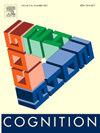第一属性启发式影响风险选择偏好
IF 2.8
1区 心理学
Q1 PSYCHOLOGY, EXPERIMENTAL
引用次数: 0
摘要
行为科学研究表明,人们似乎在决策环境和任务的影响下“在飞行中”构建自己的风险偏好(Kusev et al., 2020)。然而,很少有研究探索人们在“匆忙”决策时的心理过程。因此,本文提出、探索并建立了风险决策领域的第一属性启发式(FAH)。FAH是一种简单的决策启发式方法,它基于对第一个上下文可用属性(例如,概率或金钱)的值进行二进制比较。在三个研究中,我们发现,当这些值出现在第一个上下文可用属性上时,参与者选择具有优势值的选项的偏好和可能性比选择具有劣势值的选项的可能性增加。重要的是,我们的实验结果提供了进一步的证据,证明参与者的风险偏好是“在飞行中”构建的。具体来说,决策者使用FAH(一种简单的决策启发式),这有助于他们的偏好的不稳定性。重要的是,这种启发式及其对人类风险决策的影响并没有被预期效用理论、前景理论和优先启发式等成熟的行为理论所预测。本文章由计算机程序翻译,如有差异,请以英文原文为准。
The first attribute heuristic influences risky choice preferences
Behavioral science research indicates that people appear to construct their risk preferences ‘on the fly’, informed by decision making context and task (Kusev et al., 2020). However, very little research has explored people's psychological processing during decision-making ‘on the fly’. Accordingly, in this article we propose, explore, and establish the First Attribute Heuristic (FAH) in the domain of risky decision-making. FAH is a simple decision-making heuristic which is based on binary comparisons of values on the first contextually available attribute (e.g., probability or money). In three studies we found that the participants' preference and likelihood of selecting the option with the dominant value over the option with the inferior value increase, when these values are presented on the first contextually available attribute. Importantly, our experimental findings provide further evidence that participants' risk preferences are constructed ‘on the fly’. Specifically, decision-makers use FAH (a simple decision-making heuristic), which contributes to the lability of their preferences. Importantly, this heuristic and its influence on human risky decision-making are not anticipated by well-established behavioral theories such as Expected Utility Theory, Prospect Theory, and the Priority Heuristic.
求助全文
通过发布文献求助,成功后即可免费获取论文全文。
去求助
来源期刊

Cognition
PSYCHOLOGY, EXPERIMENTAL-
CiteScore
6.40
自引率
5.90%
发文量
283
期刊介绍:
Cognition is an international journal that publishes theoretical and experimental papers on the study of the mind. It covers a wide variety of subjects concerning all the different aspects of cognition, ranging from biological and experimental studies to formal analysis. Contributions from the fields of psychology, neuroscience, linguistics, computer science, mathematics, ethology and philosophy are welcome in this journal provided that they have some bearing on the functioning of the mind. In addition, the journal serves as a forum for discussion of social and political aspects of cognitive science.
 求助内容:
求助内容: 应助结果提醒方式:
应助结果提醒方式:


